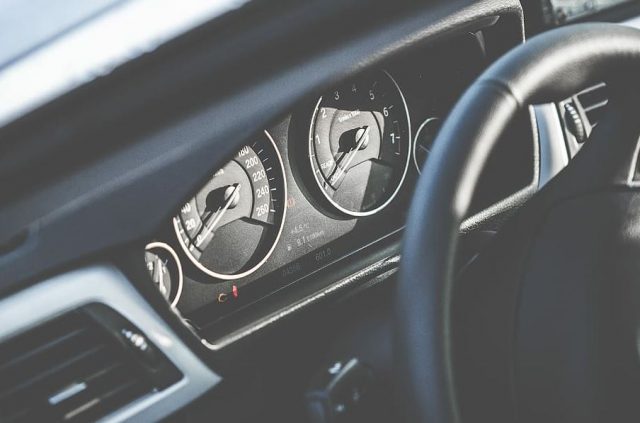Buying the perfect car seat for your baby can seem intimidating but it shouldn’t be. Here’s how to choose a car seat with 6 key things to consider.
According to the Center for Disease Control, using a car seat properly reduces a child’s risk of injury by 71%. As parents, our number one job is to keep our children safe and protected from harm, including when we are in the car traveling from place to place.
In this article, we will provide you with a detailed guide about choosing the best car seat for your child. You’ll be able to get all of the answers to the question of how to choose a car seat all in one place.
Continue reading to find out everything that you need to know.
How to Choose a Car Seat?
Many aspects need to be considered before you choose a car seat for your child. Choosing the wrong car seat will leave your child unsecured in the bag seat and increases the likelihood of them sustaining severe injuries in the event of an accident.
Being that children are small and still growing an accident can cause more injury to their bodies and result in death. The following factors should be considered whenever you’re looking to purchase a new car seat for your child.
There are other safety tips that all parents should know to keep your child safe.
- Pay Attention to the Safety Indicators
Many car seats have indicators that let you know that they are at the proper level for your child to sit in. The level that the seat needs to be positioned in depends on the age, height, and weight of your child.
It typically has a small silver ball that rolls from front to back and will show if the chair is sitting too far forward. It will also let you know if the chair is sitting too far back.
Once the ball has settled in the middle of the indicator is when you’ll know that the chair has been positioned correctly.
- Extra Padding
Another feature that you’ll want to check to ensure it’s functioning correctly is the extra padding attached to the seat. This padding is made as shock-absorbing padding in case you are involved in an accident.
Some reports are stating that this extra padding isn’t as beneficial as it’s supposed to be because it may be in places that don’t cover your child. However, overall the extra padding does ensure that your child is protected and will feel very little if there is an accident.
It’s entirely up to you as the parent if you’re willing to pay for the extra padding. However, if you’re looking for peace of mind, then the extra padding is worth it.
- Installation Ease
Another aspect to consider when purchasing a car seat is how easy it is to install. If you’re not planning to remove the car seat from the car often, then this doesn’t really matter.
However, if you will frequently remove the seat from the car and move it to another vehicle or a stroller, then you’ll want to consider the installation method. Depending on the car seat that you select, it may be apart of a car seat and stroller combination.
Most seats use the LATCH system when it comes to installation. The LATCH system works because there are anchors attached to the car seat that feature built-in clasps on the opposite end.
You will locate the hooks on the underside of your car seats and hook the clasps to them. The other method of securing the car seat is by placing the car seat to the base that comes with the seat and using a seatbelt to secure the seat.
It’s recommended that you use one or the other, but not both methods to secure the car seat.
- Fabric
Many chairs offer different patterns and colors to choose from. One of the downsides to these various colors and patterns is that the fabric used to create them isn’t always child-friendly.
This means that the fabric isn’t easy to clean. Think about it, your child is going to eat snacks and drink beverages while sitting in this seat, which can lead to the seat becoming messy.
The last thing you’re going to do is spend hours trying to clean the fabric of the things that have been spilled on it. Ensure that you read the cleaning instructions attached to the seat.
Some are made to easily remove the fabric from the chair and throw it into the washing machine to clean it—this same type of material you can take a warm washcloth and wash the seat out.
Another way to clean the seat fabric is to take a car vacuum and vacuum all of the crumbs out of the seat that has been left behind.
Also, frequently cleaning the seat will keep you from scrubbing harder when you’ve left crumbs to create stains on the fabric. There are plenty of fabric options that give you the ability to clean them quickly and provide your child with a seat that shows their personality or matches the other items you’ve purchased, including your stroller.
- Size Matters
If you have multiple children, you’ll want to choose a car seat that fits within your car without taking up any unnecessary space. Some car seats are more prominent than others because of the attachments that come with the car seat.
Before purchasing or ordering a car seat, take the time to check the dimensions of the car seat, and then measure the space in your car. Once you know the aspects that you have, then you can choose a car seat that will fit within your vehicle.
If you need multiple car seats, it may work better to choose the same brand of seat that you’ve used for another child. This is recommended because you will already know the size of the original seat and select a seat that is the same size or smaller.
- Harness System
When you get a car seat, there are two different types of harnesses that you can use with the seat. There is the five-point harness and the three-point harness that can be used with the seat.
When you’re using a five-point harness, if you’re involved in an accident, the seat will take the shock absorbed by the harness and transfer it to the seat instead of inflicting that force onto your child.
When using a five-point harness, you can easily adjust the straps so that it is modified and fits your child perfectly. The surface area of your child’s abdomen is better protected when using a five-point harness.
The next harness that can be used is the three-point harness. The significant difference between the types of harnesses has to do with the number of straps that are being used.
With a three-point harness, there aren’t any straps that can be placed over the shoulders, back and hips of the child. Whereas, with the five-point harness, there are straps in all of these places absorbing all of the force that may be inflicted on the child.
Letting Drivers Know a Baby is in the Car
When it comes to warning other drivers that there is a child in the car, there are some easy ways to do this. The best way to do this is to have a baby on board sticker located somewhere in your vehicle, preferably the back of the car.
Nowadays, these stickers can say that there is a baby on board in various ways. This allows you to choose the sticker that fits you and your family’s personality.
Check out the link we provided above to choose the correct sticker for you to purchase and place in your car.
Types of Car Seats
There are four different types of car seats that parents have to choose from. Each seat has its own specifications when it comes to using it correctly.
As your child becomes older, they will need to have their seat changed to meet their growing size and weight. Using a seat that isn’t the correct size for your child can put them in a position to be severely injured if they are involved in an accident.
Your child should be moved from one car seat to another once they have exceeded the maximum height and weight limit set by the car seat manufacturers. Moving your child out of one seat and into another before it’s time can increase their risk of injury.
Infant Car Seat
The infant car seat is designed for babies that are freshly born up to a maximum weight of 22 pounds. This type of car seat is lightweight, making it easier to transport from one place to another.
Depending on the type of system that you choose, you may purchase a seat that comes with a base. The base will allow you to easily remove the seat from the car without unlocking the clasps from the buckles located on your seat.
Rear-Facing or Convertible Car Seat
A rear-facing car seat should be used for as long as possible. A rear-facing car seat helps keep the spine and head of your child protected, which at this age is important because these areas are still soft and developing.
Most children’s physicians, including the American Academy of Pediatrics, will recommend leaving your child in a rear-facing car seat until they are 2 years old or have reached the maximum height and weight specified by the car seat manufacturer.
Because of the protection offered by the seat in an accident, the car will absorb all of the shockss, protecting your child’s neck, head, and spine.
Once your child has reached the maximum limit, the seat can be moved to a front-facing seat. Once you’ve moved the seat to face forward, you will need to use the harness that is designed to protect your child when facing forward.
This harness will go above your child’s shoulders to ensure that they aren’t launched forward if you stop abruptly or are in an accident.
Combination Seats
A combination seat should be used for children that have at least reached the age of one-years-old or are between 20-40 pounds. These seats are best for front-facing, but they can also be used in combination with a booster seat for your child.
This seat is the seat before you begin using a booster seat by itself and a seatbelt. We recommend not using these seats for rear-facing because that’s not what they are intended for.
Booster Seat
A booster seat is to be used when your child has graduated from using a car seat and is on their way to using the car seat as you would. This seat is recommended to be used by children that are 4-8 years old.
You should only begin to allow your child to use a booster when they have completely grown out of their combination car seat in height and weight. When your child has reached 4’9″ is when the child is now ready to use a seat belt without the booster seat.
Picking a Car Seat
When you’ve finally learned how to choose a car seat by reading through the guide that we’ve provided above for you, all you’re left to do is choose a seat. Remember that if you have any doubts about the seat’s ability to keep your child safe and protected, it’s not the seat for you.
We appreciate you taking the time to read this guide thoroughly. And if you’re interested in reading other articles related to this one, we recommend you scroll through some of the other articles on this page.

A professional writer with over a decade of incessant writing skills. Her topics of interest and expertise range from health, nutrition and psychology.




